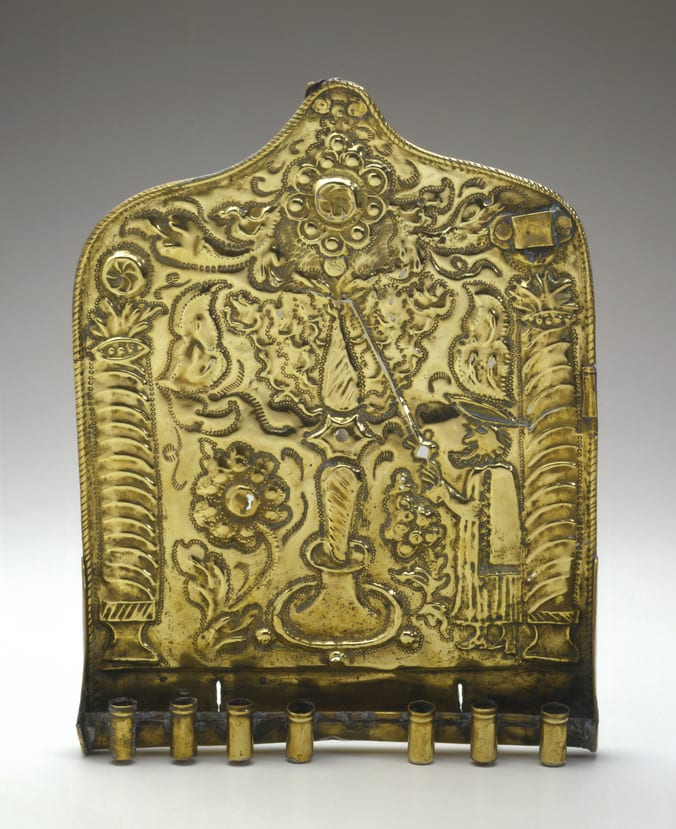
- Object Name:
- Hanukkah Lamp
- Place Made:
- Germany (?)
- Date:
- 18th century
- Medium:
- Copper alloy: repoussé, chased, and punched
- Dimensions:
- 13 1/2 × 10 1/4 × 1 1/2 in. (34.3 × 26 × 3.8 cm)
- Credit Line:
- Gift of Dr. Harry G. Friedman
- Accession Number:
- F 53
Not On View
The lamp depicts a man lighting a seven-branch candelabrum with a taper, probably meant to represent the original Temple menorah that was rededicated in ancient times. The figure's costume consists of a flat burette or beret; a tunic; and a cloak, called a sarbal, that originated in Talmudic times. These elements were characteristic of German Jewish costume beginning in the seventeenth century, and remained the traditional dress for prayer in the synagogue until the nineteenth century. The Baroque spiral columns, elaborately decorated arms of the menorah, and acanthus scrollwork above suggest an eighteenth-century date.
Copper-alloy Hanukkah lamps from Germany are rare, as are wall-hung lamps. The tradition of making sheet-brass items, such as bed-warming pans and foot warmers, was prevalent in Germany, adopted from the neighboring Netherlands. It is likely that the few German Hanukkah lamps known in this medium represent the dissemination of the type from the Netherlands.
Copper-alloy Hanukkah lamps from Germany are rare, as are wall-hung lamps. The tradition of making sheet-brass items, such as bed-warming pans and foot warmers, was prevalent in Germany, adopted from the neighboring Netherlands. It is likely that the few German Hanukkah lamps known in this medium represent the dissemination of the type from the Netherlands.
Information may change as a result of ongoing research.